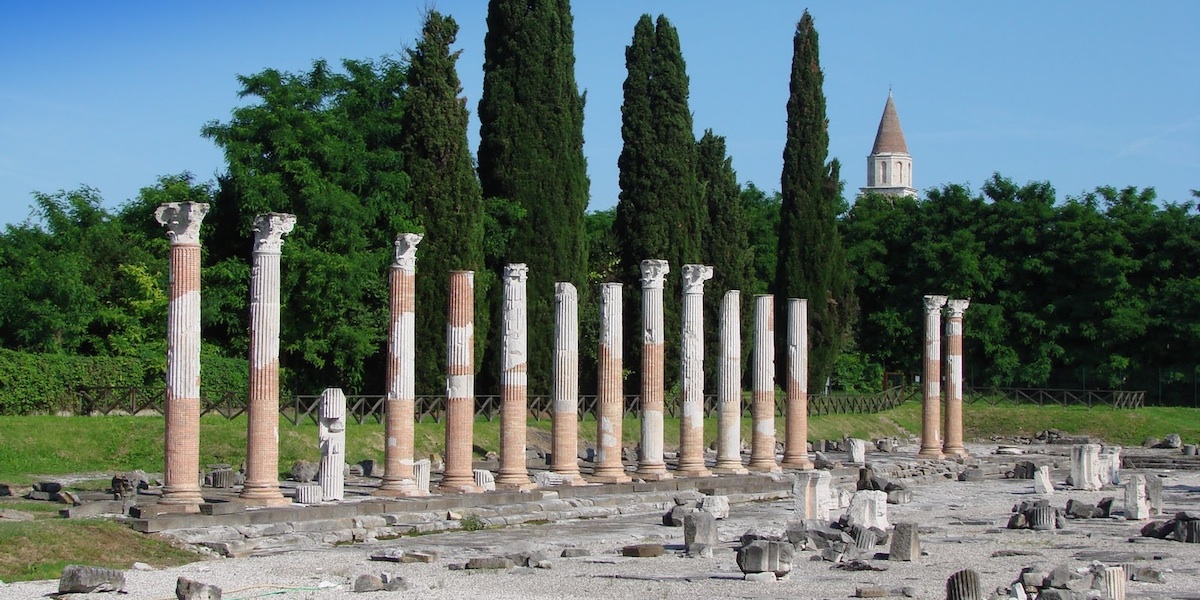
Aquileia
A jump into the past
Visiting Aquileia is like taking a trip back two thousand years to immerse themselves in the history and Roman civilization.
Founded in 181 BC as a colony, it was immediately a center of strategic importance for the conquest of the territories of the Danube and the defense of the eastern borders. The city grew thanks to agriculture, cattle breeding and the flourishing of shops and workshops, soon becoming an important commercial crossroad with both the East and northern Europe. Crossed by the navigable river Natissa-Torre, the city was one of the major emporium of the empire and, thanks to its famous river port, high-quality goods passed through here, including Austrian iron and leather from Nordic countries, as well as tissues and oriental spices. Thanks to the work of Bishop Teodosio, who after the edict of Constantine (313 AD) made build the great Basilica, since the fourth century, Aquileia became one of the most important centers of Christianity.
The barbarian invasion at first, the devastations made by Attila in 452 and finally the descent of the Lombards, who made Cividale del Friuli their capital in the second half of the sixth century, marked the gradual decline of the city. It was only in the Middle Ages, the so-called age of the patriarchs, that Aquileia gradually found its splendor as a fief of the Holy Roman Empire and then under the domination of the Venetian Republic.Passed through various domains in the modern era, it was only at the end of the First World War that became part of the Regno d’Italia (Kingdom of Italy).
The big complex of the Basilica, the outdoor archaeological sites and the national museums will allow you to spend an entire day to explore the ancient splendor of the city. Arriving to Aquileia around the middle of July, it is possible to appreciate even more the Roman culture that lives each year in the historic center with the reconstruction of the "castrum" (Roman military camp), of the craft shops and of the historic battle between Romans and Celts staged by several actors.
A "Roman market" also offers the opportunity to purchase truly original souvenirs while some of the city's restaurants offer dishes according to the recipes of the ancient Roman Apicius. During the night between the 5th and 6th of January you can instead attend the "Cabossa", the lighting of bonfires on the threshing floor in front of the farm houses, the tradition wants that each family gathering around the fire drinking mulled wine, gets the auspices of the year just begun interpreting the direction taken by the smoke rising into the night.
